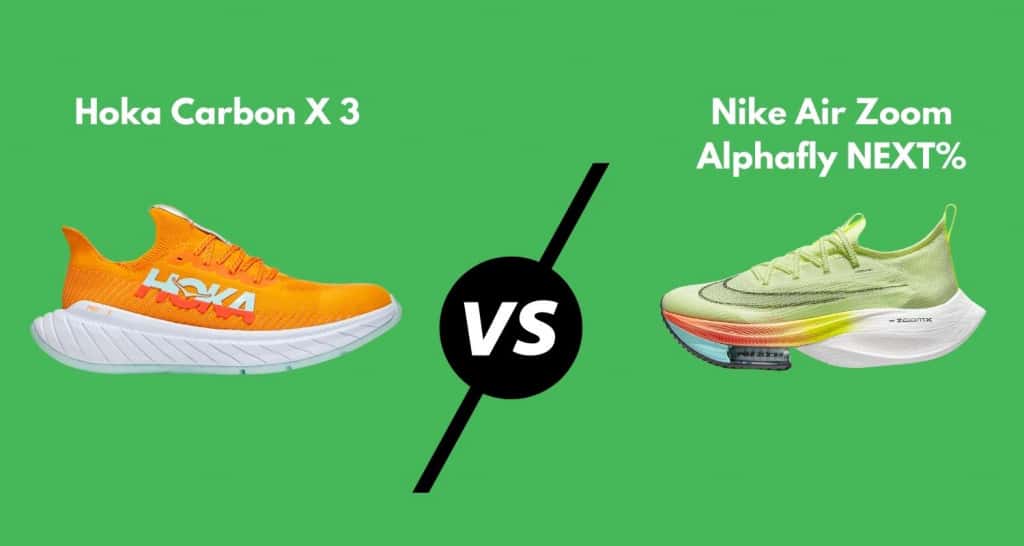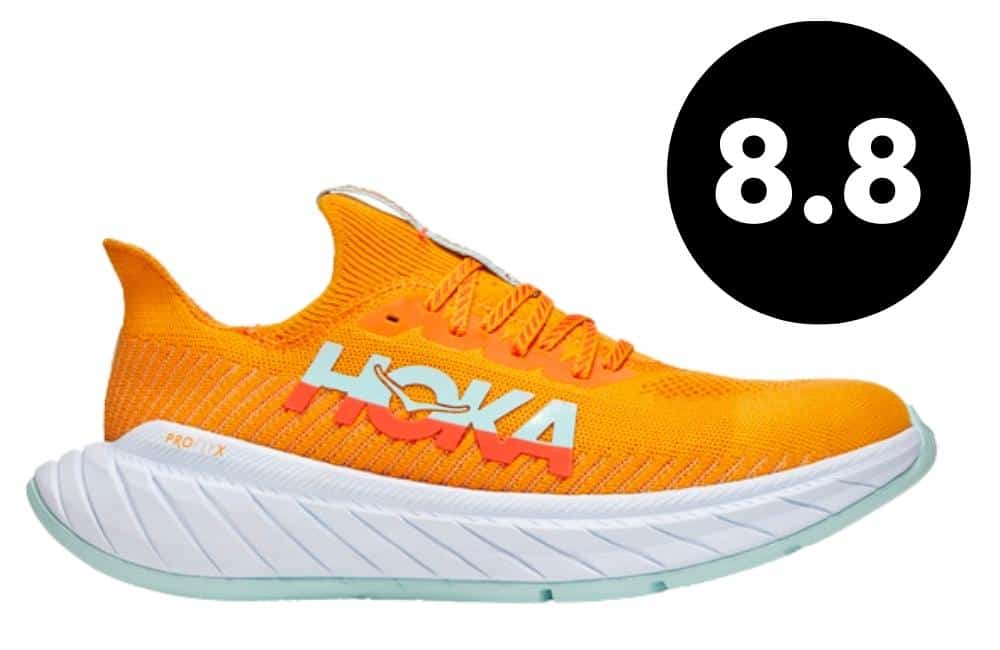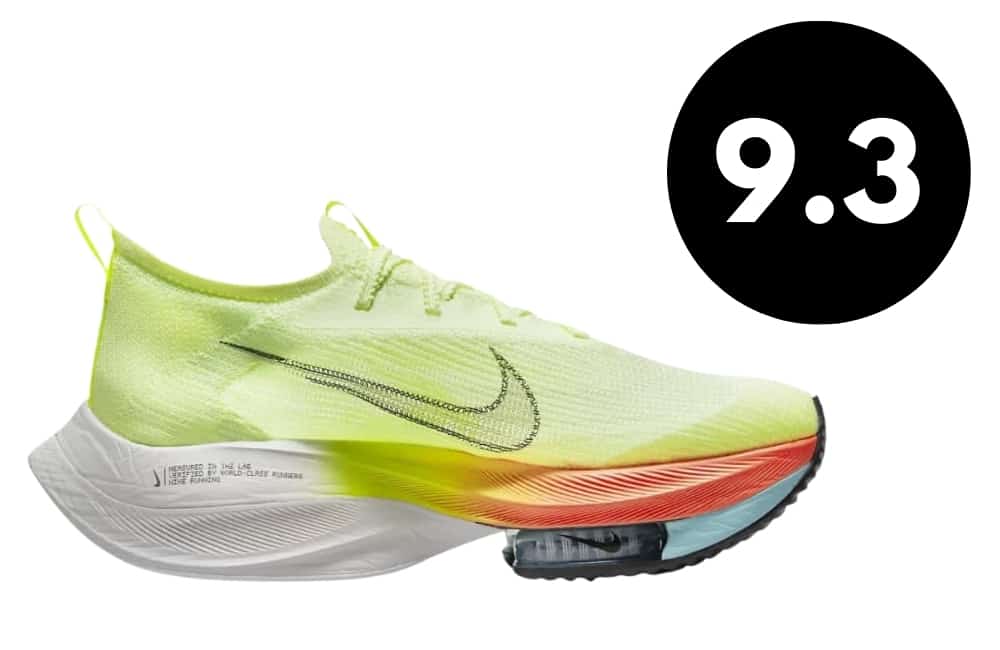Hoka Carbon X 3 vs. Nike Air Zoom Alphafly NEXT% (2022)
Can Hoka really compete with Nike when it comes to carbon-fiber plate shoes? After all, Nike is the pioneer of this technology with its Vaporfly.
First of all, it’s important to know that Hoka One One is targeting very long distances (ultra) with its Carbon X 3. The brand relies on ultramarathon running champion Jim Walmsley to promote this road running shoe.
On the other hand, the Alphafly is Nike’s go-to marathon shoe alongside the Vaporfly. It’s with this shoe that Brigid Kosgei has established a new world record in the women’s marathon. However, the World Athletics banned this model for the Tokyo Olympics so its future in competition is uncertain.
Let’s note that the Nike Alphafly offers an elite configuration made to go very fast: ultra-light design (210 g/7.4 oz) and maximal cushioning with carbon plate (40 mm heel stack height). In comparison, the Carbon X 3 from Hoka is less impressive with its weight of 242 g/8.5 oz g for a thickness of 32 mm in the heel.
Note also that the drop is low on both shoes: 5 mm for the Carbon X and 4 mm for the Alphafly Next.
In 2022, Hoka finally got into supercritical foam (a specific manufacturing technique) with its PROFLY X+ midsole foam while the Alphafly uses ZoomX, a Pebax-based foam. In practice, this translates into a firmer underfoot feel for the Hoka.
Finally, testers note that the Nike Alphafly’s ride is much more responsive than the Hoka Carbon X 3. The latter offers smooth transition and a decent energy return, but the Nike Air Zoom Alphafly Next’s propulsion and bounce are much more impressive according to runners.
Carbon X or Alphafly: Which One to Choose?
If the Alphafly provides a more explosive ride and, therefore, allows you to go faster, the Hoka has other advantages for it.
First of all, it’s more versatile and stable and, as a result, it’s more comfortable even at slower paces, while the Alphafly is more for fast speed. Second, the durability of the Hoka is better. Thus, these factors make the Carbon X 3 compatible with daily running, which is not the case with the Nike model.
Simply put, you have a choice between performance and versatility. If you are looking for a pure racing shoe, then choose the Alphafly. If you’re looking for a more versatile carbon plate shoe to have fun on your daily runs, we recommend the Carbon X 3.
Side-By-Side Comparison
Smooth and stable ride
Good versatility
Efficient traction on the road
Fairly durable shoe
Precise foot lockdown
Good space even for wider feet
Lightweight
Above-average durability for a carbon shoe
The new ‘Nature’ version is more ecological with 50% recycled material (by weight)
The low heel-to-toe drop may not be suitable for everyone
Really expensive shoe
Hoka Carbon X 3
Nike Air Zoom Alphafly NEXT%
Technical Specs
| Terrain | Road | Road |
| Pronation type | Neutral | Neutral |
| Drop | 5 mm | 4 mm |
| Heel stack height | 32 mm | 40 mm |
| Forefoot stack height | 27 mm | 36 mm |
| Weight (men) | 242 g/8.5 oz | 210 g/7.4 oz |
| Weight (women) | 214 g/7.55 oz | 184 g/6.5 oz |
| Features | Rocker, Carbon plate | Carbon-fiber plate |
| Athletes | Jim Walmsley | Eliud Kipchoge, Brigid Kosgei |
| Release year | 2022 | 2020 |
Technologies
| Outsole | Rubberized foam | Textured rubber |
| Midsole | Early Stage Meta-Rocker Geometry, PROFLY X | ZoomX, carbon plate, Zoom Air |
| Upper | Engineered mesh | Atomknit |
Cushioning
| Softness (1-5) | 2 – Firm | 3 – Moderate |
| Bounce (1-5) | 4 – Bouncy | 5 – Very bouncy |
Use
| Speed | All | Fast |
| Distance | Mid, long, 10k, half marathon, marathon | Mid, long, 10k, half marathon, marathon |
| Workout | Competition, daily runs | Competition |



